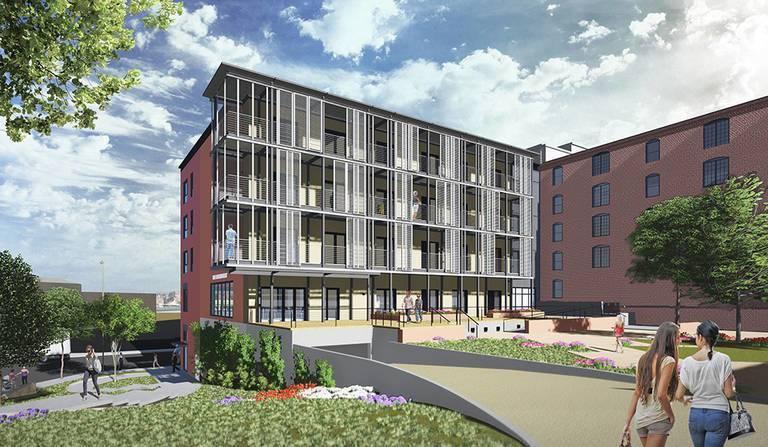
By Andrew Vitvitsky
Architects, engineers and builders are steadfastly focused on their specialized mission to create a sound built environment. It is thus remarkable to see a leading alliance of the building sector, the Northeast Sustainable Energy Association (NESEA), refocus its efforts on a new goal: proactive engagement with public policy for efficient energy and carbon reduction.
The Building Energy 2017 Conference, organized by NESEA and held in Boston from March 7 through March 9, became the venue for publicizing a new strategic plan that embraces a commitment to advocacy and the policy process. The typical conference program of design, technical and business solutions integrated content on government policy as a lever for achieving sustainability goals.
With the retreat from environmental policy by the Donald Trump administration, NESEA’s initiative can be applauded as timely effort to address a looming gap. Although it will be several months before the initiative takes full shape, the alliance is well positioned to make an impact.
Since its founding in 1974, NESEA has been a platform for networking and exchange of know-how for the building sector in the six New England states plus New York, New Jersey, Delaware and Pennsylvania. The organization’s annual flagship conferences in Boston and New York feature workshops and presentations by specialists on a range of current topics. The yearly gatherings include exhibitions of products and services, convening thousands of practitioners and companies from the region. Over the years, NESEA membership has done much to drive energy efficiency and carbon reduction in the Northeastern states
High-performance building systems
Popular workshops at the Boston conference included those devoted to high-performance building systems, reflecting growing interest in robust standards for both new construction and retrofits.
A standing-room-only session on Net Zero Energy (NZE) and Living Building Challenge (LBC), two established models, heard consultants, engineering firms and architects address challenges of overcoming client uncertainty. Case studies highlighted cost-benefit arguments while communication strategies were presented for opening clients to a broader view of project goals. Examples included mainly institutional and public buildings, reflecting slower uptake of ZNE and LBC by commercial construction.
Filling a large auditorium was the session on multi-family passive buildings presented by the Passive House Institute U.S. (PHIUS). The high-performance PHIUS system, adapted from a German model, has gained traction in many U.S. states and cities based on its positive record.
Government agencies adopted this standard for affordable and market housing, often supporting projects with technical assistance and funding. PHIUS officials gave an overview the core design principles, certification process and offered convincing performance data from exemplary buildings.
The leverage of public policy
Making the important case for the leverage of policy were two workshops on March 8. The Massachusetts Department of Energy Resources (DOER) reported on the strong impact of the Stretch Code (higher norms adopted voluntary by cites) and renewable energy provisions in the base state building code.
From the Rhode Island Office of Energy (RIOER) Resources, we learned about accelerating market benefits of the state's building energy-labeling program and integration of clean-energy norms in the state code.
The Building Codes Assistance Project (BCAP) from Washington, D.C. traced the positive trajectory of the national Model Energy Codes from 1975 to 2015, emphasizing the need for Heartland states to achieve parity of standards with of the more progressive coastal states.
The Massachusetts DOER also highlighted its efforts to promote and incentivize high-performance building --including advances in the state solar rebates program, outcomes of a major energy-storage initiative, and a new PACE program for financing energy retrofits.
A progress report on the Pathways to Net Zero programs of grants for pilot projects offered data on technologies and designs impacting efficiency outcomes. An insightful presentation on state rebates and tax credits for installation of efficiency equipment illustrated significant incentives which can drive down the cost of projects.
The challenges
NESEA companies and practitioners continue to explore strategies for achieving sorely-needed impact. According to the Net Zero Energy Coalition there were all of 3,339 NZE buildings in the U.S. as of last year: 219 were in Massachusetts, 212 in Connecticut and 85 in New York.
In 2016, PHIUS reported not more than 1.1 million square feet of certified or pre-certified space distributed across 1,200 residential units nationwide. These outcomes leave little doubt about the need to achieve greater scale in the sustainability of the U.S. built environment. With buildings consuming 39 percent of total energy and accounting for 38 percent of carbon emissions, the scope of the challenge cannot be underrated.
State policy, which enacts measures for upgrading building standards on one hand and incentivizing voluntary high-performance on the other, is increasingly recognized as a key accelerator.
The 2016 State Energy Efficiency Scorecard published by the American Council for and Energy Efficient Economy (ACEEE) correlates ratings of the top five states (California, Massachusetts, Vermont, Connecticut and Rhode Island) with their robust policies, including building codes, building efficiency ratings and state-led financial incentives.
By undermining the Clean Power Plan and CAFE vehicle emissions standards, the Trump administration is set to deplete two mainstays of America's commitment to the Paris climate accord. Experts at research institutions are looking for strategies that allow states to double down on their climate policies and offset withdrawal by Washington.
Image courtesy of the Passive House Institute U.S.
Andrew Vitvitsky is Cambridge (MA, U.S.A.) based environmental journalist and an affiliate of the MIT Climate Colab.
TriplePundit has published articles from over 1000 contributors. If you'd like to be a guest author, please get in touch!














